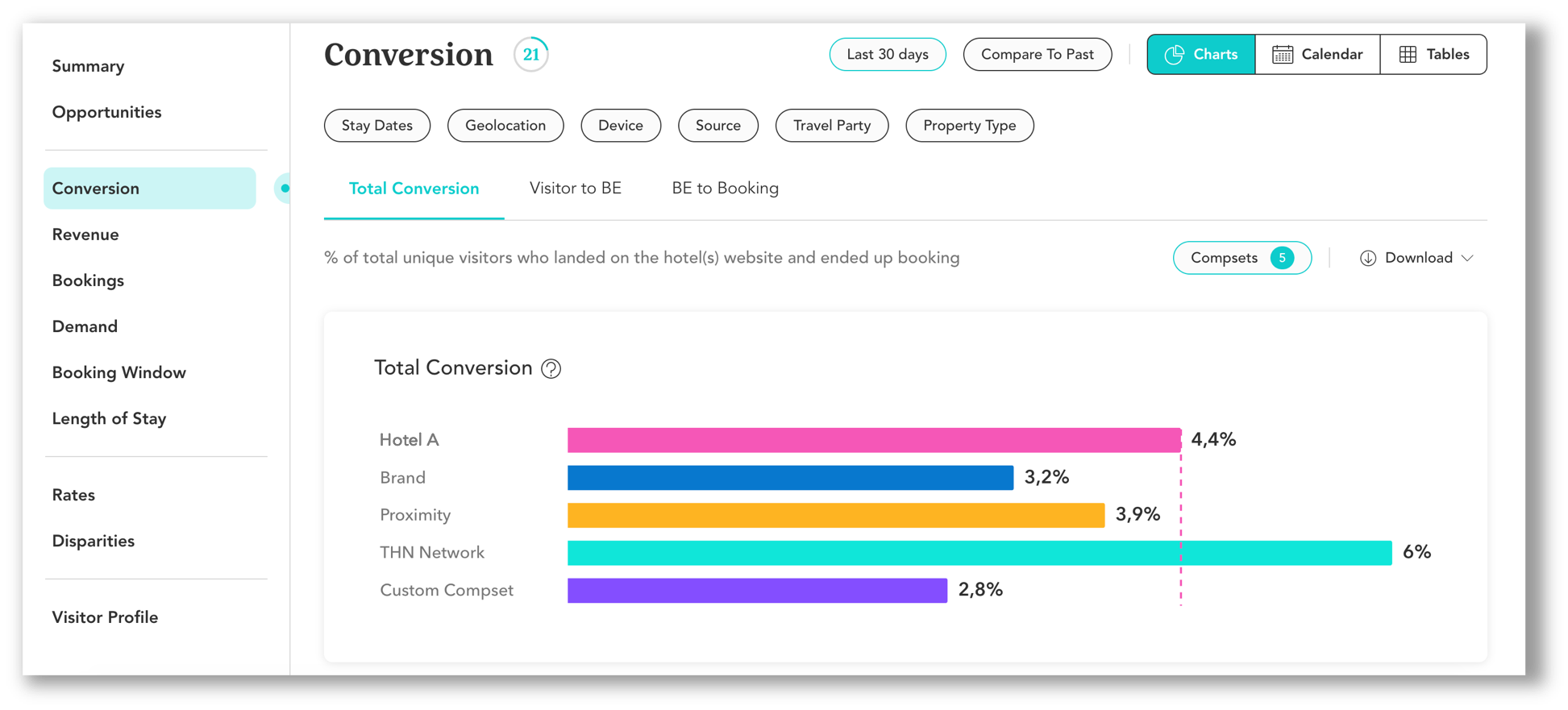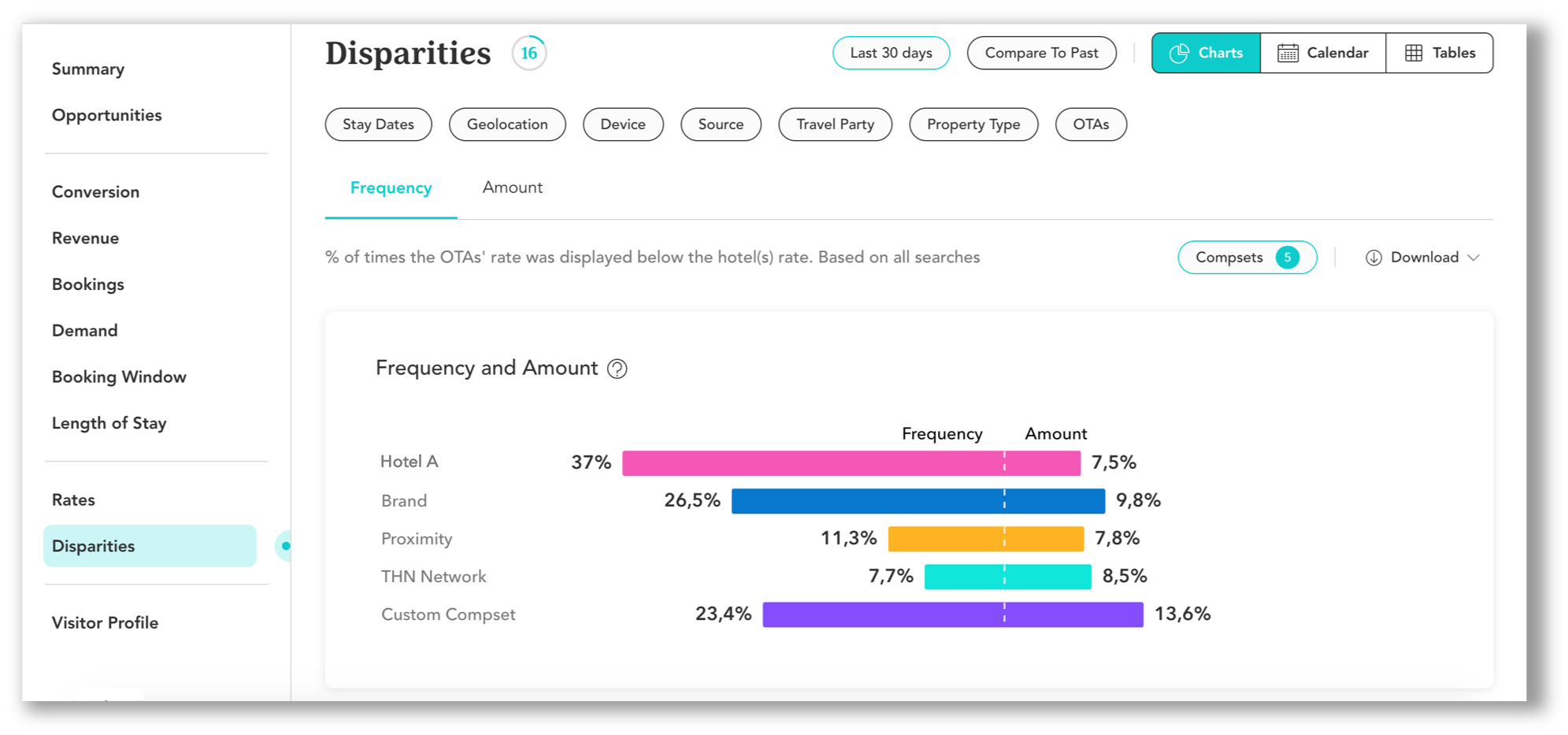It’s well-known that direct bookings are critical to the success of hotels, yet performance management of this channel is often insufficient. Through hotel benchmarking, hoteliers are able to use valuable competitive insights to make better-informed decisions but it can sometimes be difficult to know which metrics you should be paying attention to.
At The Hotels Network, we released an ebook for hoteliers, 10 Direct Channel KPIs, where we introduce a brand-new KPI framework that highlights the top metrics to focus on when evaluating the direct channel success of your hotel. Below you can find a brief introduction to some of the metrics covered in the guide.
Total Conversion Rate
Direct channel total conversion rate is defined as the percentage of website bookings received during the selected period compared to the number of visits to your hotel website. With the average total website conversion rate at around only 2% for hotels, there is a huge opportunity to focus on optimizing conversion to increase direct revenue, without increasing your marketing spend.

Visitor to Booking Engine (BE)
One of the most important steps in the booking funnel, Visitor to BE is defined as the average conversion rate from those users who landed in your website to those who made a search on your booking engine. For hotels, Visitor to BE conversion rates typically range between 35% to 55%.
Booking Engine (BE) to Booking
BE to Booking is defined as the average conversion rate taking into account only those users who made a search on your booking engine and ended up booking a stay at your hotel. Conversation rates at this stage of the booking funnel tend to be lower, often ranging from 5% to 15%.
Direct Occupancy Rate
Direct Occupancy rate is calculated by dividing the total number of rooms booked on the direct channel by the total number of available rooms for a specific period, multiplied by 100. Reflecting your room inventory, it’s a good indication of how well you are selling your rooms through the direct channel.
RevDirect
This is the Revenue Per Available room for your direct channel only. RevDirect is calculated by dividing the total direct room revenue by the total number of available room nights. Focusing on growing RevDirect will allow you to increase the revenue per available room specifically for your direct channel.
Disparities Frequency
Disparities Frequency is defined as the average percentage of times the OTA’s rate was cheaper than the hotel’s rate when a search was made on a hotel website during the selected period. The rate varies by market and by OTA but it is quite common to see an average range of between 10% to 30%.

Demand
Demand can be defined in two different ways – by searches made on your website during the selected period or by unique visitors who searched. Monitoring demand becomes even more relevant when you relate it to stay dates as you can easily see where spikes in demand are occurring.
Direct Booking Index (DBI)
Developed by THN, the Direct Booking Index™ (DBI) is an overall score to measure your hotel’s global performance versus the market in terms of direct bookings. Calculated by weighing algorithmically each section involved in your direct channel strategy, DBI ratings range from 0-100 points, with a strong DBI considered to be above 50.
For more details on this new KPI framework for the direct channel, read our full guide. To start benchmarking your hotel’s direct booking performance compared to the market, request your free BenchDirect account today.



























